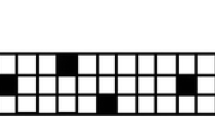Abstract
Hybrid two dimensional (2D) wavelength-hopping time-spreading coding techniques have been focused now days for Optical Code Division Multiple Access (OCDMA) systems to increase the capacity of system. In this paper, design and comparative analysis of five different 2D coding techniques has been performed. These codes use Synchronized Quadratic Congruence sequences (SQC), Prime Code sequences (PC), Synchronized Prime Sequences (SPS) and One-Coincidence Frequency Hopping Code (OCFHC) for wavelength hopping and (n, w, λ a , λ c ) one dimensional optical orthogonal codes for time spreading respectively along with Extended Reed Solomon (E-RS) codes. It has been observed that SQC/OOC code inspite of having larger value of cross correlation than other codes under consideration, out performs due to its ability to support a larger code weight. The comparison on the basis of BER shows that irrespective of the increase in number of hits due to higher code weight, SQC/OOC provides better code performance and hence supports large number of users in the system. The results are reported on the basis of maximum auto- and cross correlation function, cardinality and bit error rate (BER).
Similar content being viewed by others
References
Prucnal, P.R., Santoro, et al., Spread spectrum fiber-optic local area network using optical processing, IEEE/OSA J. Lightwave Technol., 1986, vol. 4, pp. 547–554.
Salehi, J.A., Code division multiple access techniques in optical fiber networks, Part I: Fundamental principles, IEEE Trans. Commun., 1989, vol. 37, pp. 824–833.
Maric, S.V., Kostic, Z.I., and Titlebaum, E.L., A new family of optical code sequences for use in spread spectrum fiber-optic local area networks, IEEE Trans. Commun., 1993, vol. 41, pp. 1217–1221.
Stok, A. and Sargent, E.H., The role of optical CDMA in access networks, IEEE Commun. Magazine, 2002, pp. 83–87.
Sun Shurong, Yin Hongxi, and Xu Anshi, A new family of 2D optical orthogonal codes for optical CDMA access networks, in Asia Pacific Conference on Communications, Perth, Western Australia, 2005, pp. 3–5.
Yang, G.C. and Kwong, W.C., Prime Codes with Applications to CDMA Optical and Wireless Networks, Boston, MA: Artech House, 2002.
Shivaleela, E.S., Selvarajan, A., and Srinivas, T., Two-dimensional optical orthogonal codes for fiber-optic CDMA networks, J. Lightwave Technol., 2005, vol. 23, pp. 647–654.
Kwong, W.C., Yang, G.C., Baby, V., Brès, C.S., and Prucnal, P.R., Multiple-wavelength optical orthogonal codes under prime-sequence permutations for optical CDMA, IEEE Trans. Commun., 2005, vol. 53, pp. 117–123.
Yang, G.C., Lin, Y.C., Chang, C.Y., and Kwong, W.C., Construction of optimal 2D optical codes using (n,w,2,2) optical orthogonal codes, IEEE Trans. Commun., 2011, vol. 59, pp. 194–200.
Wang, T.C., Yang, G.C., Chang, C.Y., and Kwong, W.C., A New family of 2D codes for fiber optic CDMA system with and without the chip synchronous assumption, J. Lightwave Technol., 2009, vol. 27, pp. 2612–2620.
Salehi, J.A. and Mashhadi, S., Code-division multiple-access techniques in optical fiber networks,Part III: Optical and logic gate receiver structure with optical orthogonal codes, IEEE Trans. Commun., 2006, vol. 54, pp. 1457–1468.
Tien, J.H., Yang, G.C., Chang, C.Y., and Kwong, W.C., Design and analysis of 2-D codes with the maximum cross-correlation value of two for optical CDMA, J. Lightwave Technol., 2008, vol. 26, pp. 3632–3639.
Sun Shurong, Hongxi Yin, Ziyu Wang, and Anshi Xu, A new family of 2-D optical orthogonal codes and analysis of its performance in optical CDMA access networks, J. Lightwave Technol., 2008, vol. 24, pp. 1646–1653.
Li Yen-Feng, Yang, G.C., Chang, C.Y., and Kwong, W.C., Extended reed-Solomon Codes for optical CDMA, IEEE Trans. Commun., 2013, vol. 61, pp. 2498–2507.
Author information
Authors and Affiliations
Corresponding author
About this article
Cite this article
Bharti, M., Kumar, M. & Sharma, A.K. Comparative analysis of optical 2D codes using (n, w, λ a , λ c ) optical orthogonal codes for optical CDMA. Opt. Mem. Neural Networks 25, 149–159 (2016). https://doi.org/10.3103/S1060992X16030012
Received:
Published:
Issue Date:
DOI: https://doi.org/10.3103/S1060992X16030012




